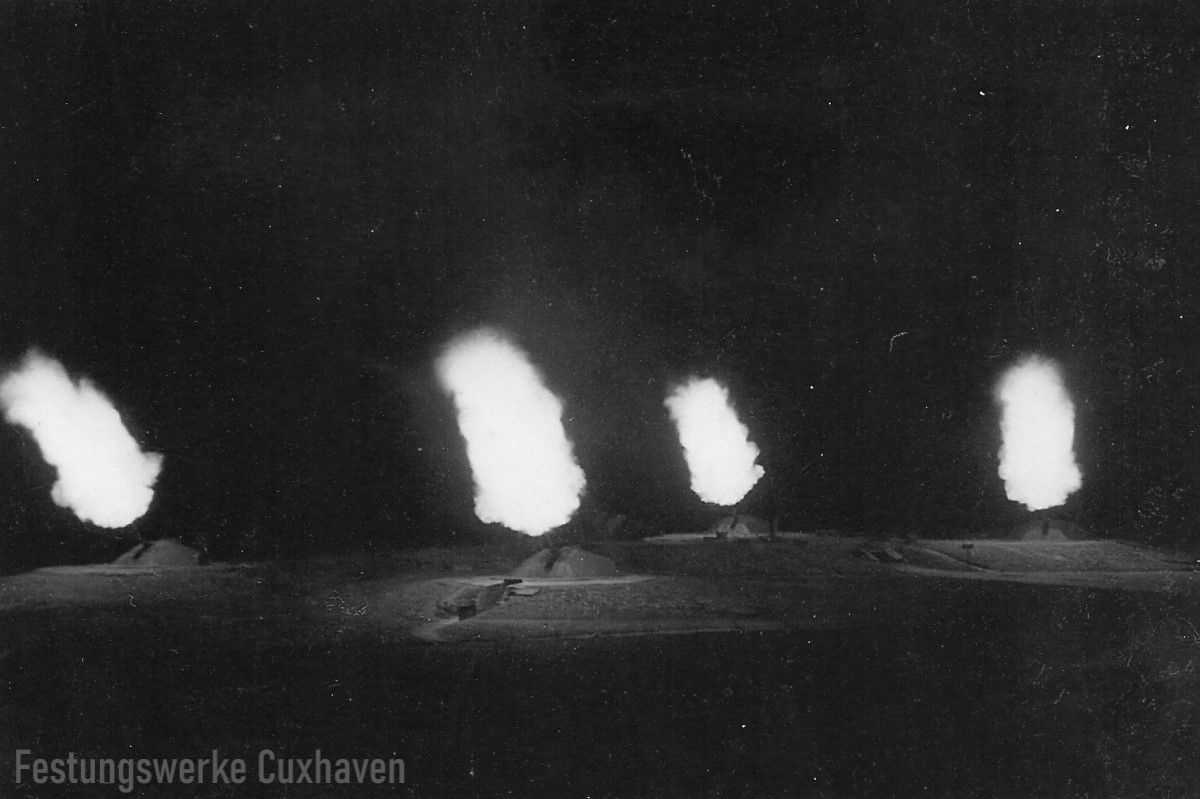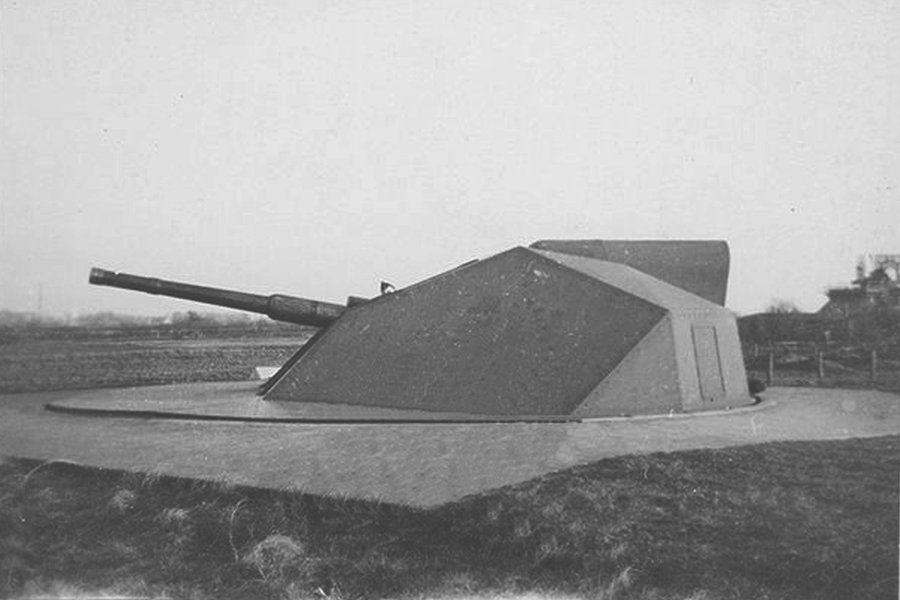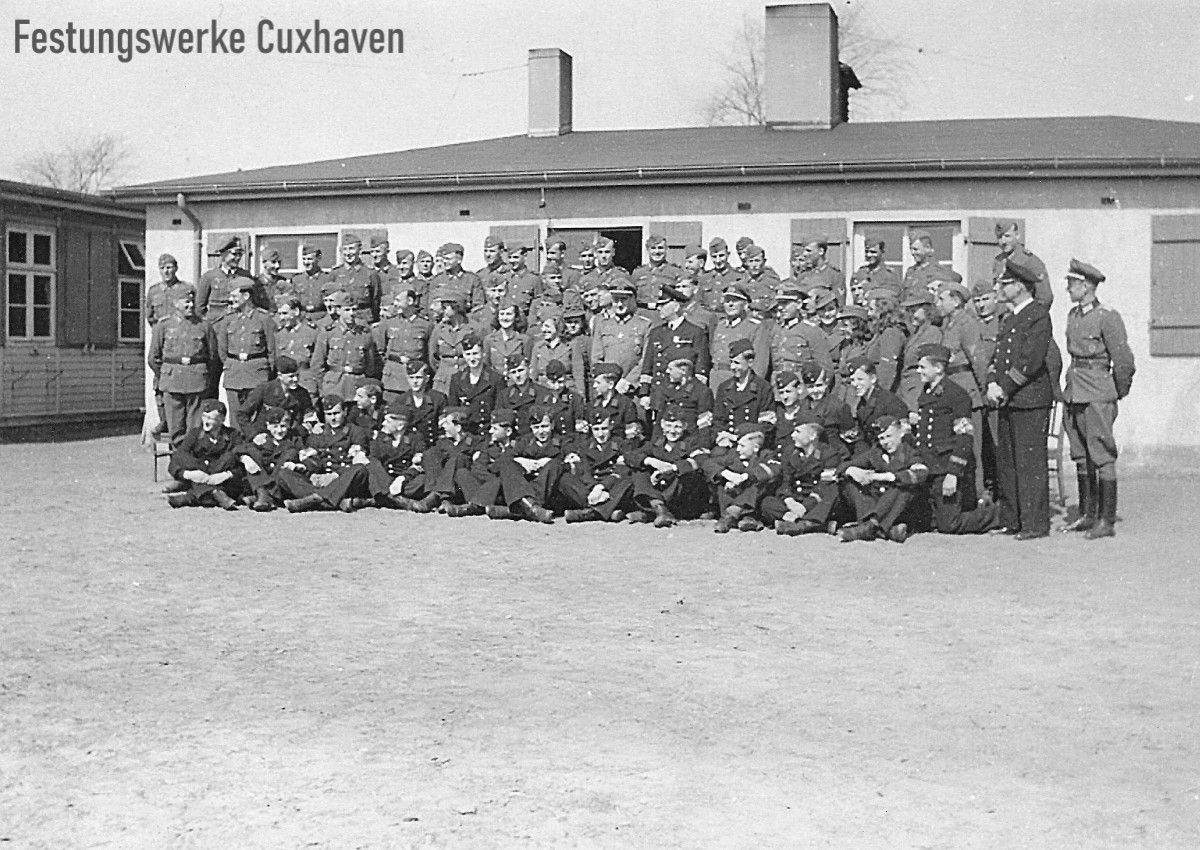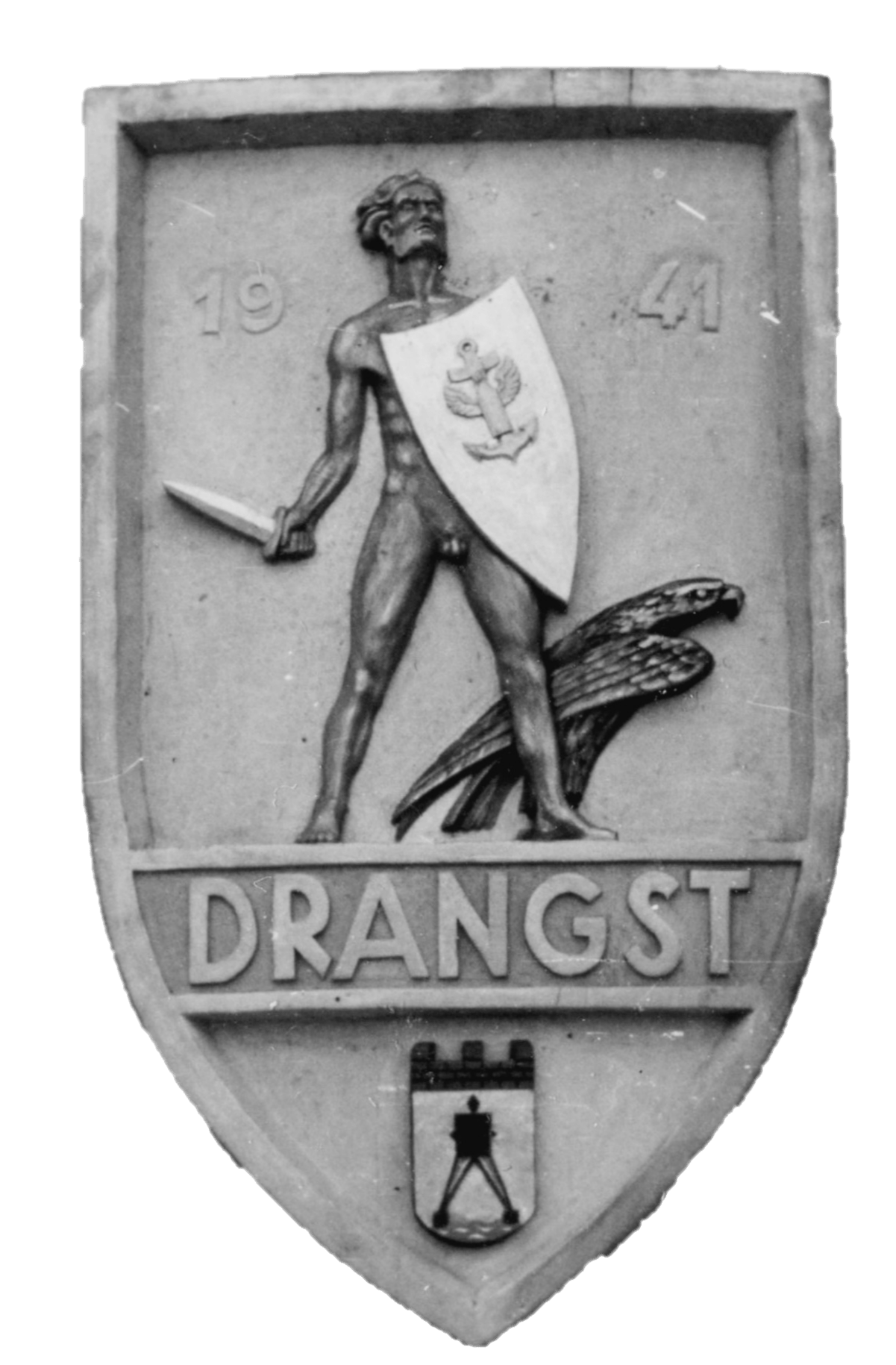

The Drangst is located very centrally in the middle of the city of Cuxhaven and belongs to the district of Cuxhaven - Süderwisch. A heavy naval anti-aircraft battery was built on this ridge in mid-1939. Initially, the position was equipped with three 8.8 cm SKL 45 guns. In the course of 1941, these were replaced by four 10.5 cm Flak 38s with protective cover shields.
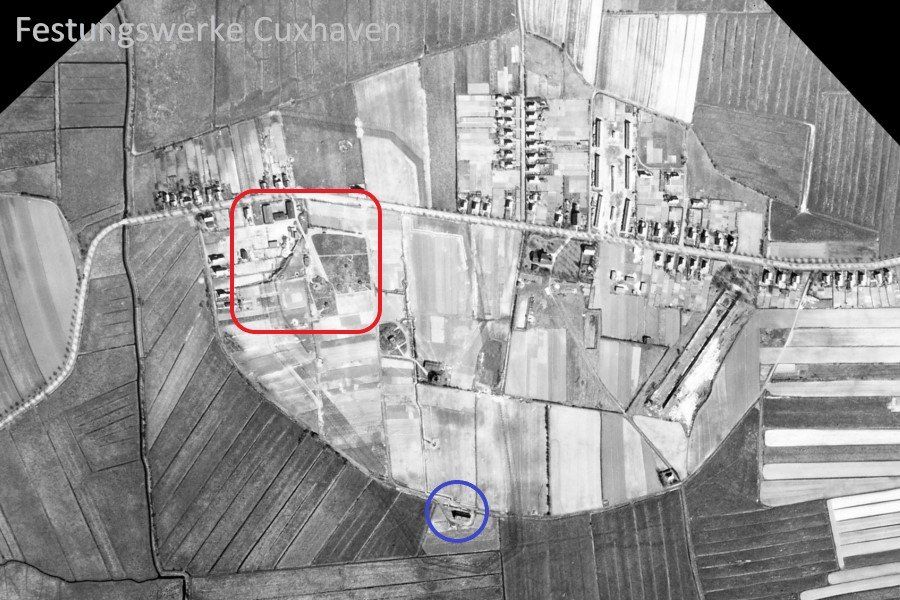
Photo from 1945Red rectangle, the anti-aircraft position. Blue circle, ammunition bunker. The long road is the urgent route to Holte - Spangen.Source: Oorlogsmuseum Middelstum/NL
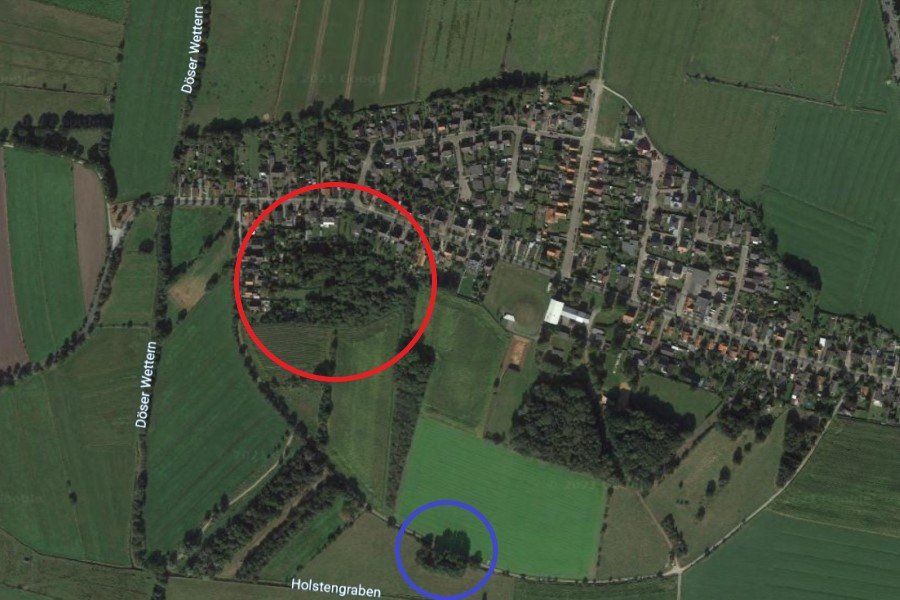
The Drangst 2021. Red rectangle, the former anti-aircraft position. Blue circle, the still existing former ammunition bunker. It now belongs to the waterworks. Source: Google
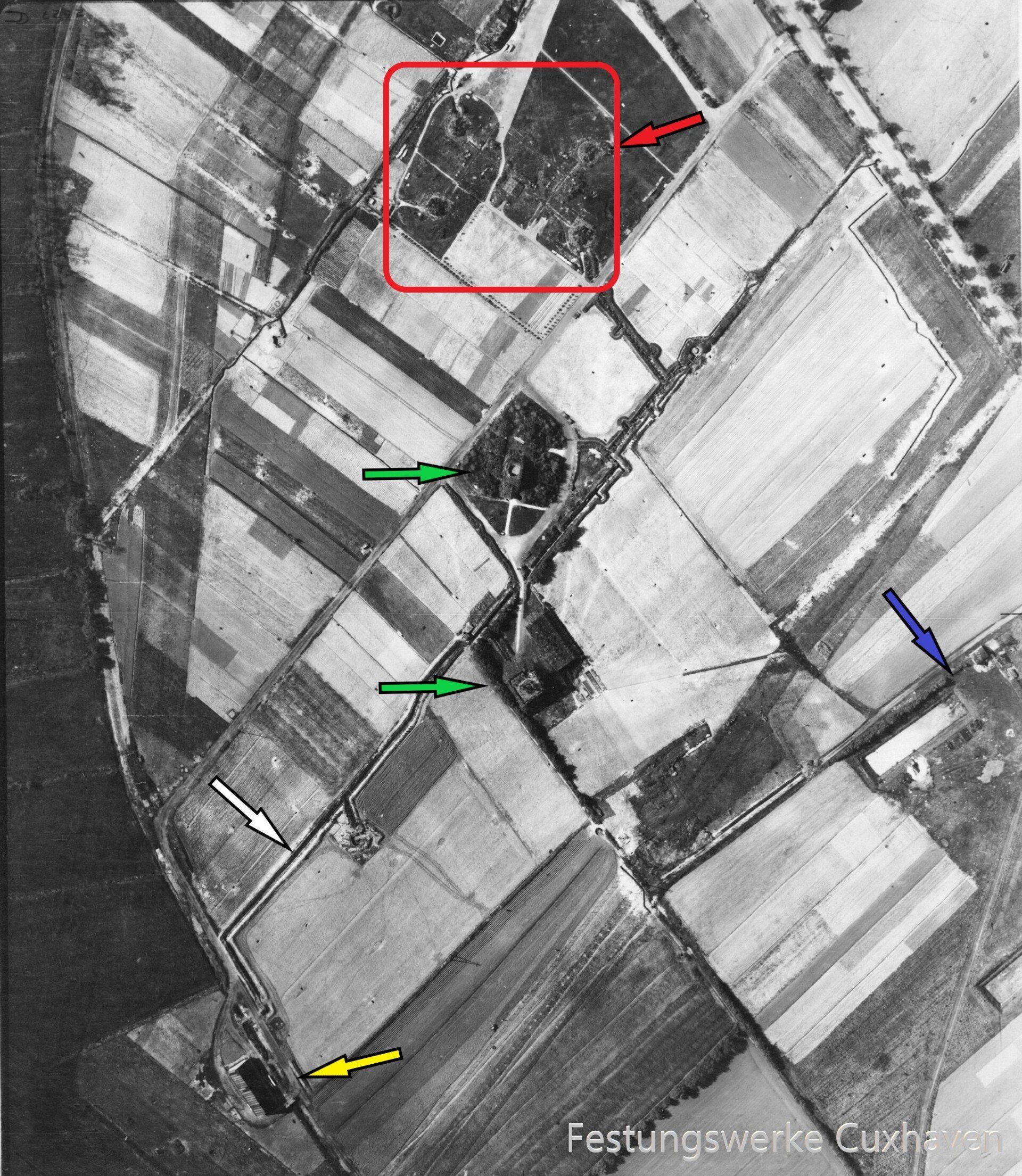
Photo from 12.05.45 Red Square, the battery with the anti-aircraft guns. Red Arrow, one of the four guns.
Green arrows, the two southern high stands. Blue arrow, the waterworks.
White arrow trenches. Yellow arrow, the ammunition bunker of the facility.Source: Oorlogsmuseum Middelstum/NL
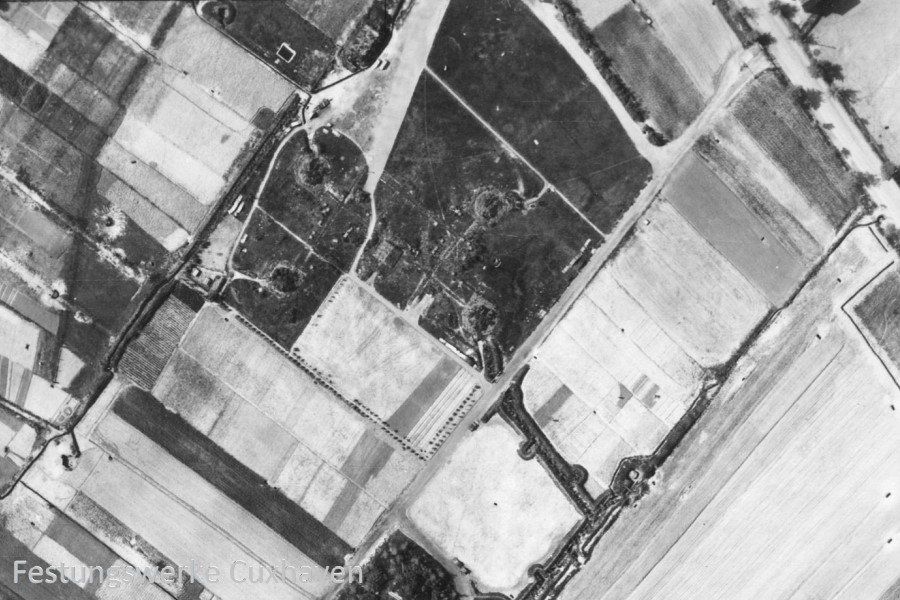
The battery on May 12, 1945, the four emplacements of the 10.5 cm anti-aircraft guns are clearly visible. The position was obviously already evacuated after the end of the war. It is difficult to determine from the photos whether the guns had already been destroyed by explosions at this point. Source: Oorlogsmuseum Middelstum/NL
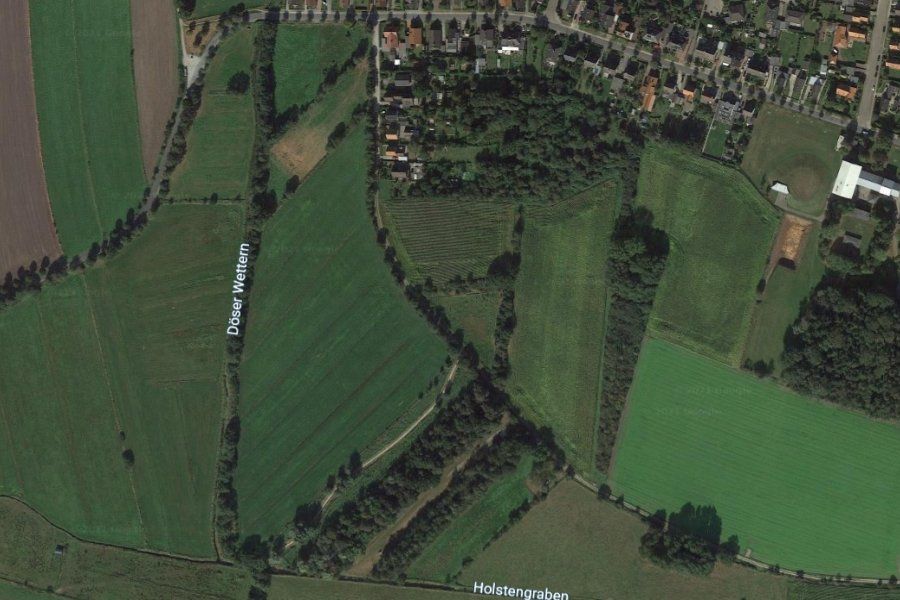
The same area in 2021. The battery area and even the entrance were not built on, as was the case with the other Cuxhaven anti-aircraft positions. Over the years, the facility has been completely taken over by vegetation.Source: Google
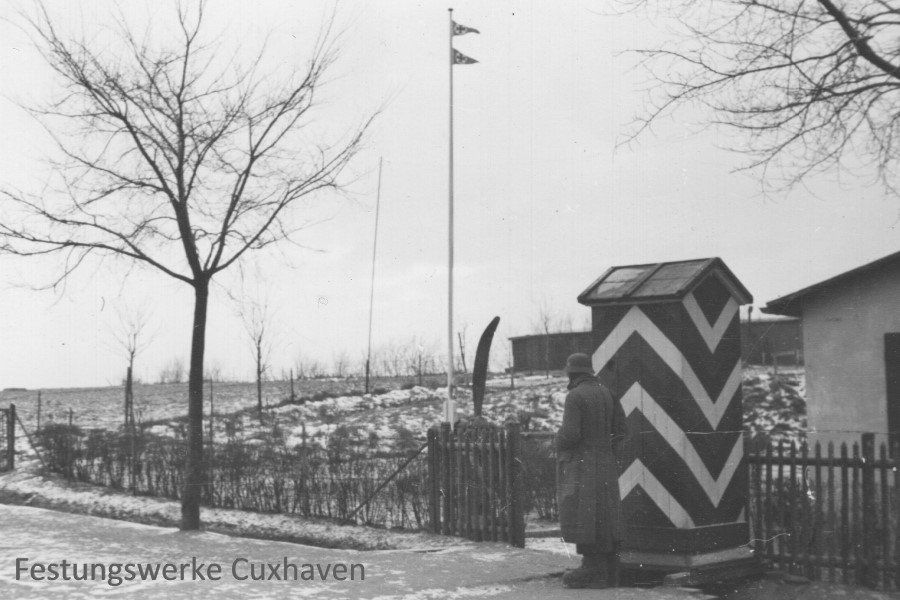
Der Batterieeingang direkt am "Drangstweg" mit Wachposten, im Winter 1940/41.
Quelle: Oorlogsmuseum Middelstum/NL
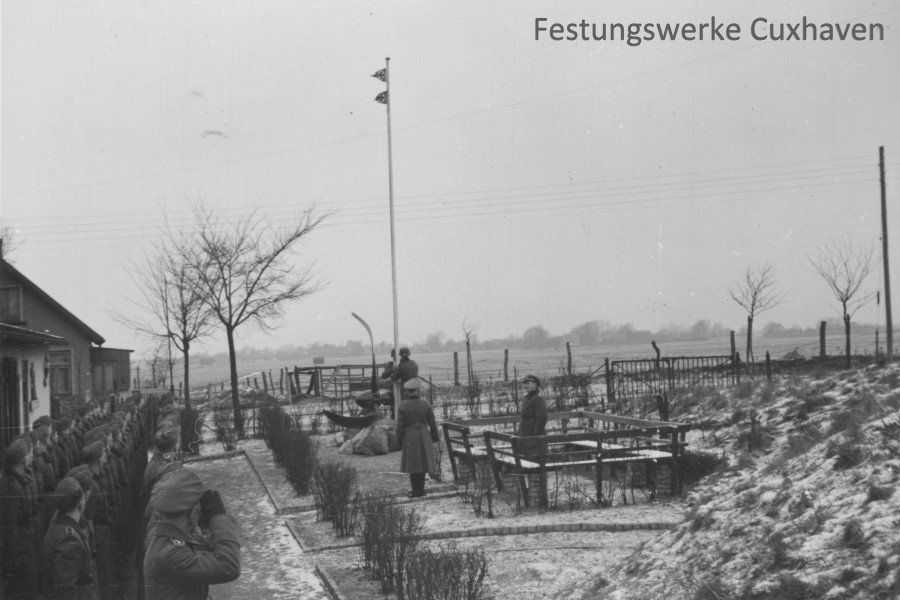
The same place from the opposite view. Placing a preserved launch pennant on the flagpole.Source: Oorlogsmuseum Middelstum/NL
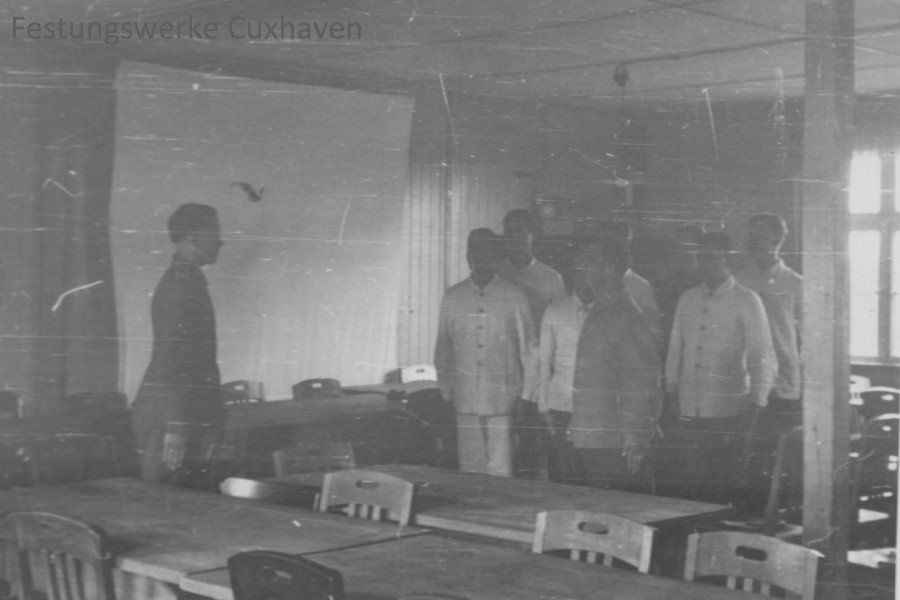
Ausbildung in der GemeinschaftsbarackeQuelle: War Museum Middelstum/NL

Lunch in the battery canteenSource: Oorlogsmuseum Middelstum/NL
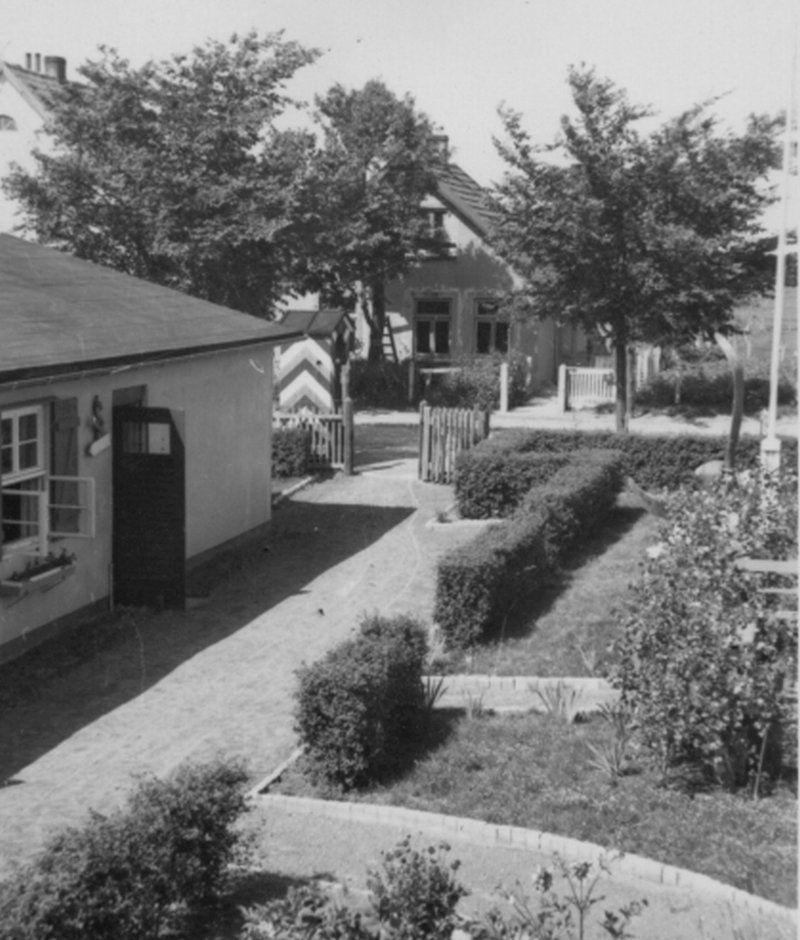
The position on Drangstweg was located directly next to the residential buildings on the street. Although there were significantly fewer houses here at the time, it was nevertheless in the immediate vicinity of the civilian neighborhood.Source: Oorlogsmuseum Middelstum/NL
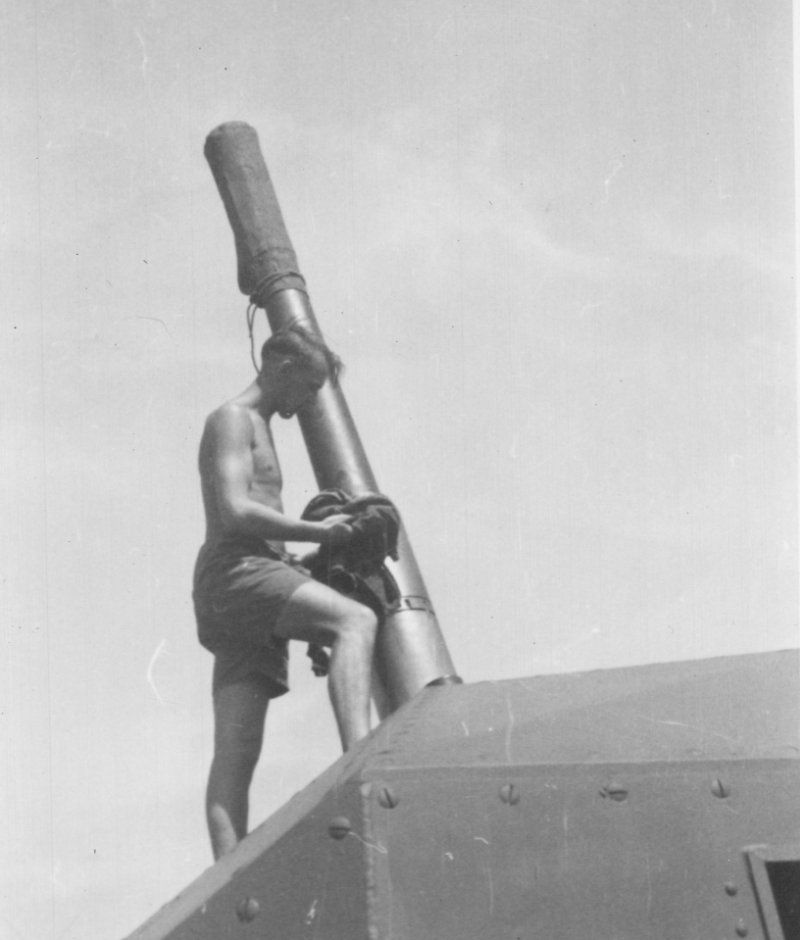
Reinigung einer 10,5 cm SK C/32. Vermutlich wurde das Foto nach 1941 gemacht, da bereits die neuen Geschütze installiert sind.
Quelle: War Museum Middelstum/NL
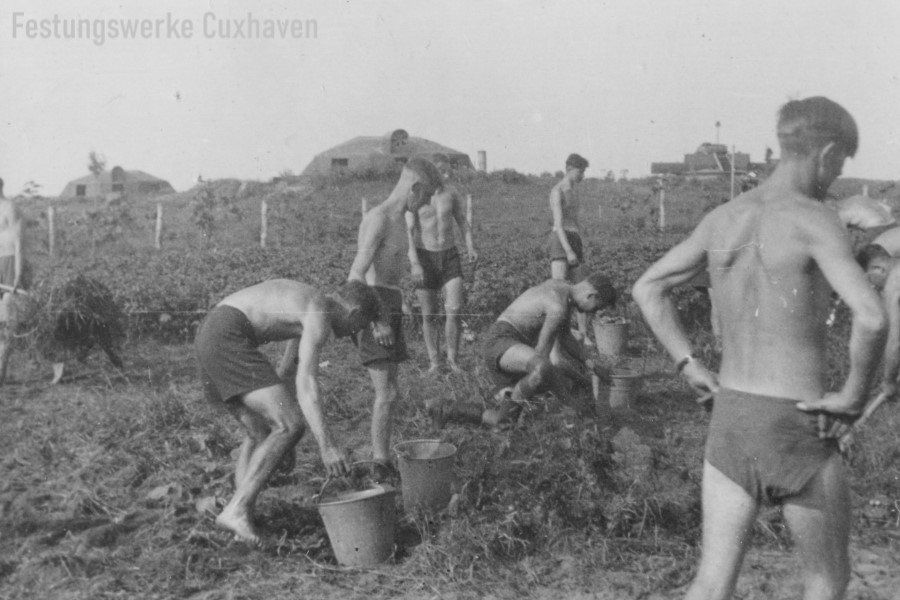
Working in their own vegetable garden, in the background the rear view of the 10.5 cm. guns and on the right the three-car that was still there. Source: Oorlogsmuseum Middelstum/NL
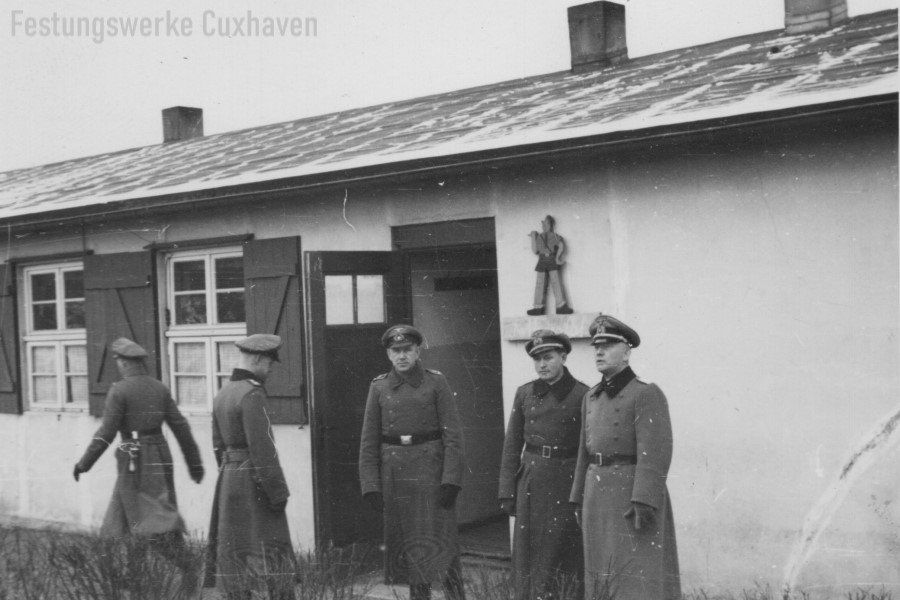
Offiziere vor der Mannschaftsbaracke.
Quelle: Oorlogsmuseum Middelstum/NL
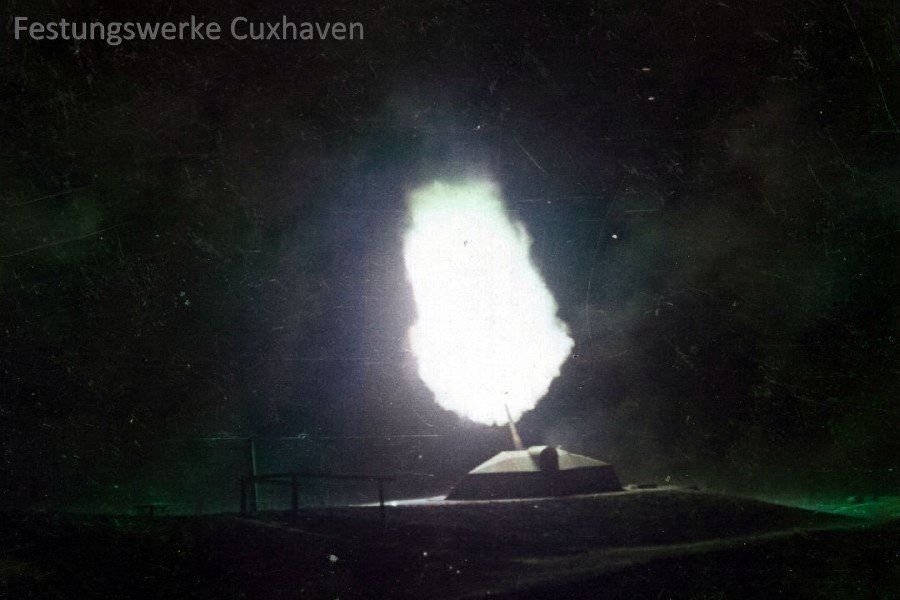
Beschuß einer 10,5 cm Flak der Stellung Drangst auf anfliegende Bomberverbände in großer Höhe.
Quelle: Oorlogsmuseum Middelstum/NL
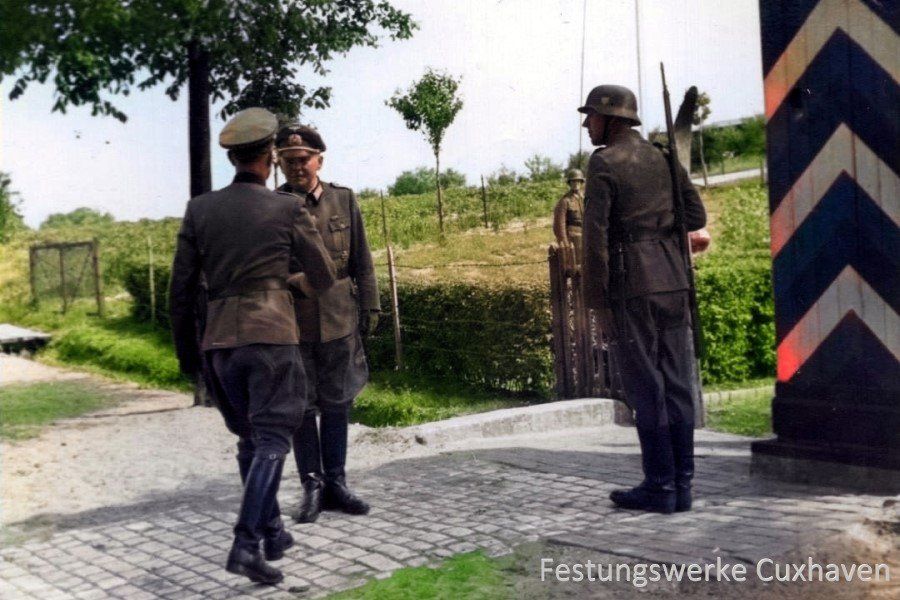
High official visit to hand over another launch pennant.Source: Oorlogsmuseum Middelstum/NL
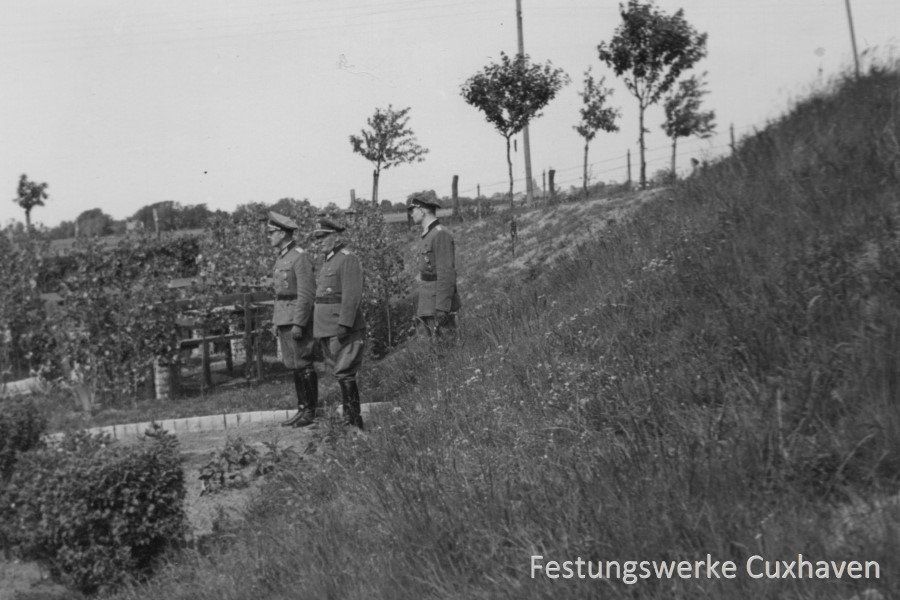
Quelle: War Museum Middelstum/NL
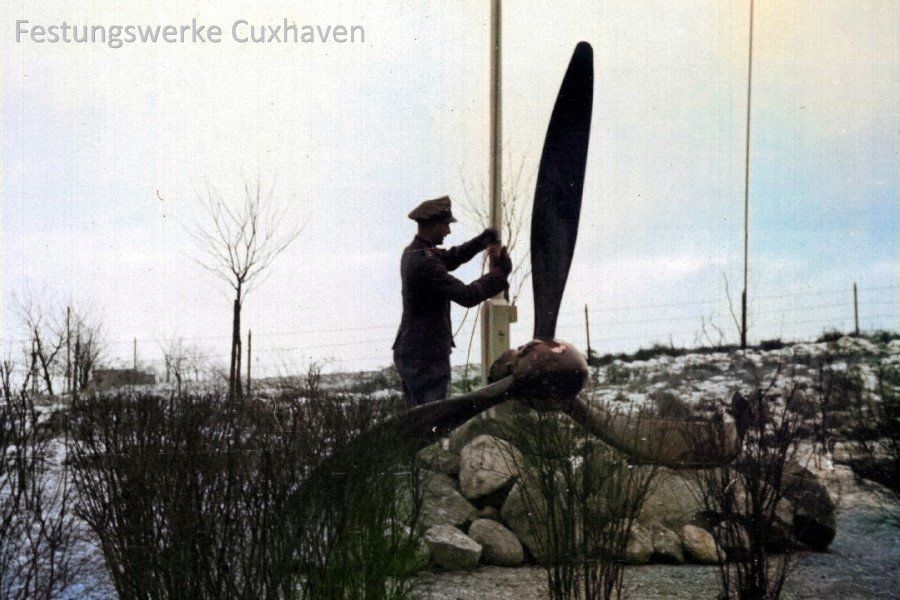
The propeller comes from an English Vickers - Wellington bomber shot down by the Drangst battery.Source: Oorlogsmuseum Middelstum/NL

Battery Chief xxxxxQuelle: War Museum Middelstum/NL

Übergabe des dritten Abschußwimpels der Batterie Drangst
Quelle: Oorlogsmuseum Middelstum/NL

Vergabe von Tagesaufgaben an die Soldaten der Batterie.
Quelle: Oorlogsmuseum Middelstum/NL

Group photo of a gun crew.Source: Oorlogsmuseum Middelstum/NL

Two anti-aircraft assistants from the Drangst battery in one of the barracks on the site.Source: Andreas Möller

Obviously, great importance was attached to self-sufficiency at the time, and to growing vegetables on the site of the fort. On the left is the Mäuseturm on the Drangstweg, behind it the Nordmoor followed by the trees of the Eichholz (Brockeswalder Chaussee). The buildings in the background on the right are probably in the area west of Meierhof, looking north. Source: MB
Battery Drangst lined up to say goodbye to the head of the department, Prince of Hohenzollern Emden. The time of the photo must have been later in the war. The number of personnel is no longer so high, but there are still naval assistants in action.Source: Andreas Möller
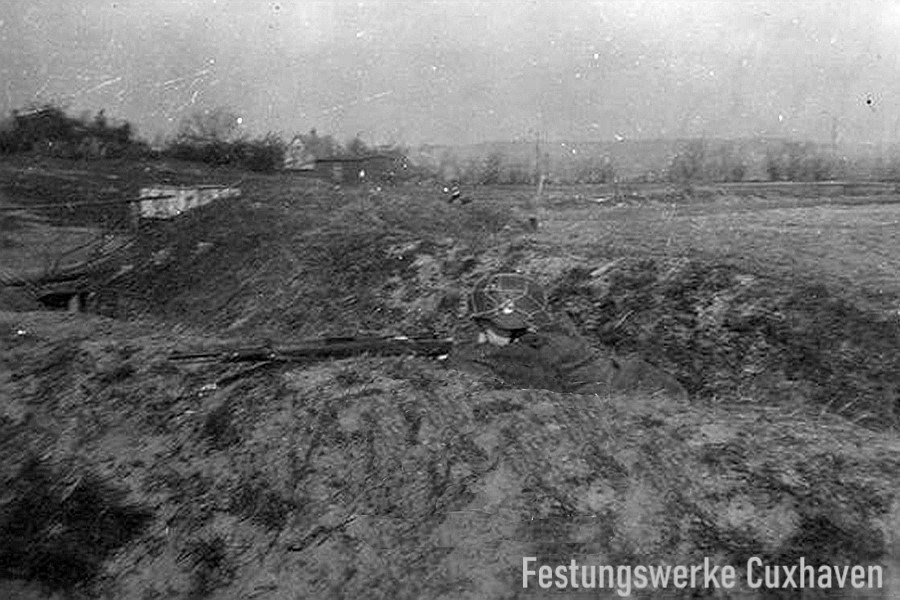
A soldier from the Drangst naval anti-aircraft battery during a combat exercise in the trenches. In the background a house on Drangstweg, behind it the Brockeswald.Source: Oliver Wleklinski
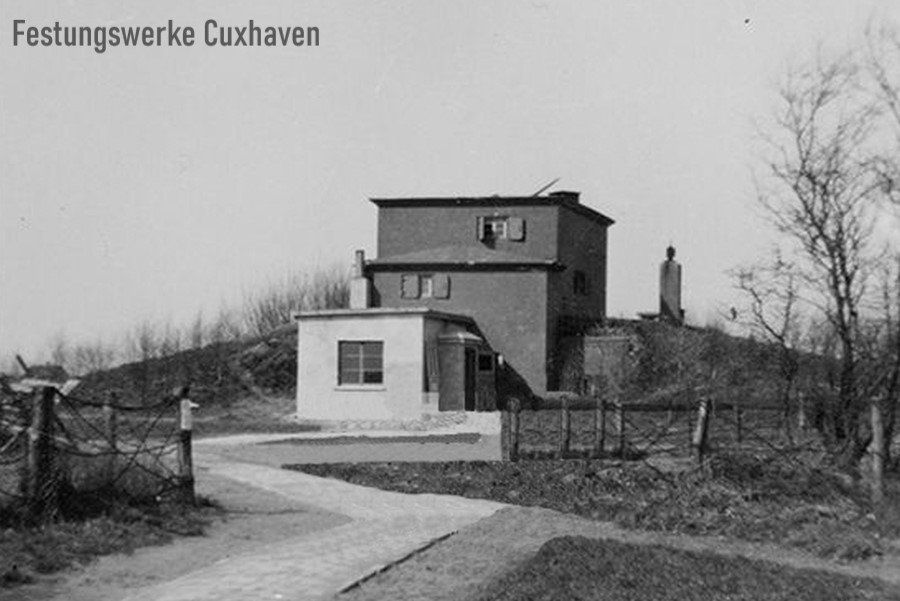
The southern engine house of the Drangst battery, above the gun barrel of the light anti-aircraft gun peeks over the parapet. Source: Oliver Wleklinski
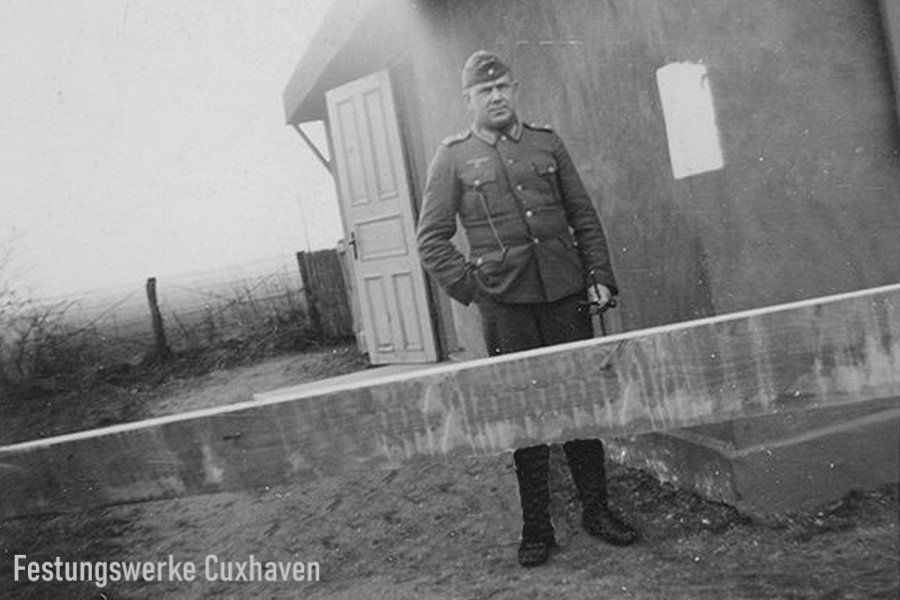
Flakleiter OFW. BosseSource: Oliver Wleklinski
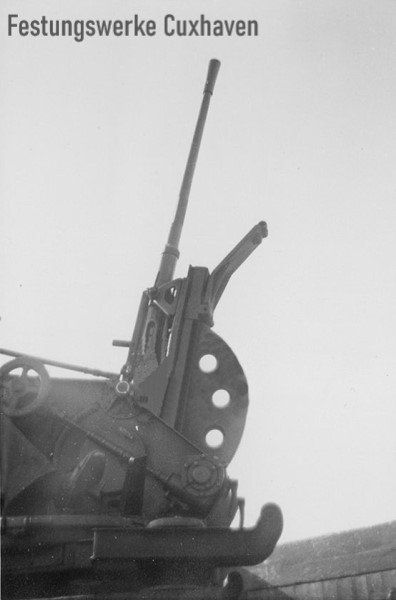
The 2 cm Flak 38 of the southern engine house.Source: Oliver Wleklinski

The Spit, HFW. Böttcher.Source: Oliver Wleklinski
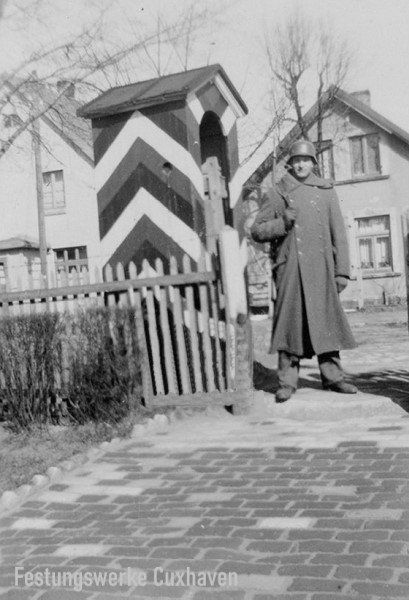
The post HGF. Allers at the guardhouse Drangstweg, the battery bordered directly on the street buildings.Source: Oliver Wleklinski

Navy helper Bobby Tönjes as a guard at the gun.Source: Oliver Wleklinski
Visit by Grand Admiral 'Karl Dönitz' Christmas 1944 in the Drangst Battery

Officers in the battery yard wait for the guest.Source: Andreas Möller
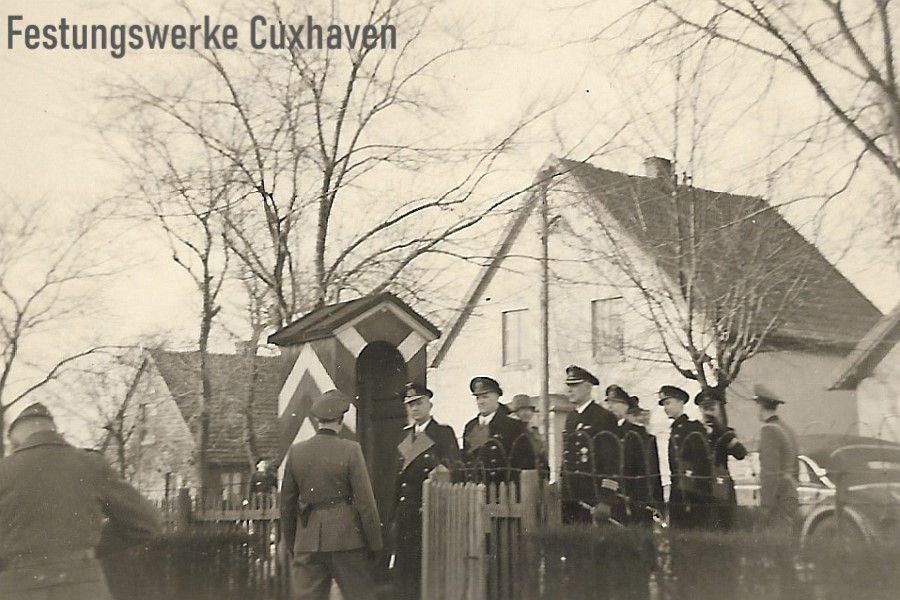
Lieutenant Commander Schünenmann welcomes the Grand Admiral at the entrance to the battery.Source: MB

Dönitz mit weiteren Offizieren.
Quelle: Andreas Möller
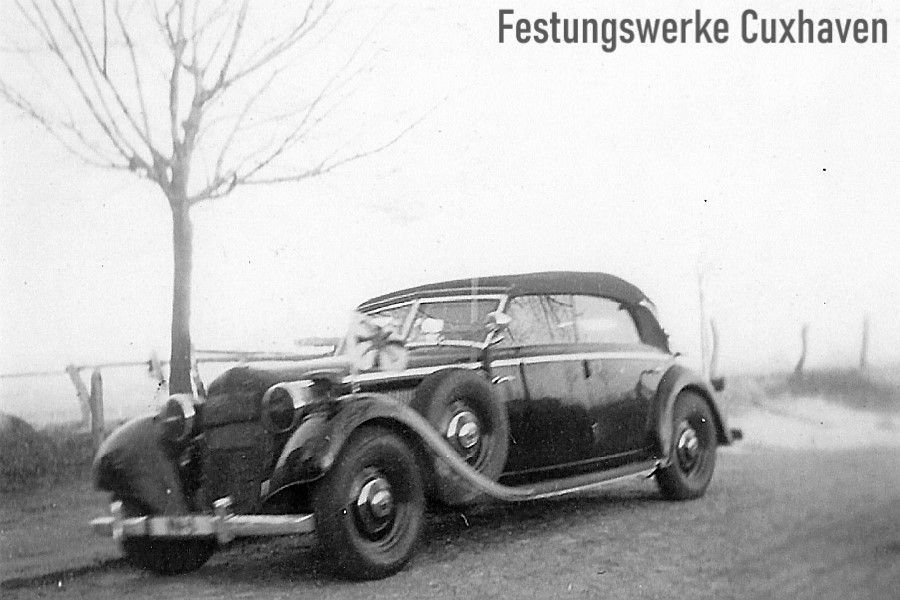
The Grand Admiral's official car is parked on Drangsweg. It is a "Horch Pullman", probably a 951 A convertible. Source: MB



